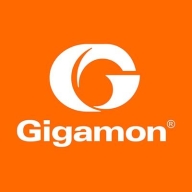

Microsoft Defender for Cloud Apps and Gigamon Deep Observability Pipeline compete in the security and network visibility category. Microsoft Defender for Cloud Apps has the upper hand due to its integration within the Microsoft ecosystem, offering robust threat detection and management features.
Features: Microsoft Defender for Cloud Apps provides seamless integration and unified reporting within Microsoft's framework, robust threat detection capabilities, and effective identity management features. Its management is cloud-based, offering security insights, especially for existing Microsoft users. Gigamon Deep Observability Pipeline enhances network visibility with packet filtering and encryption features, improving performance and troubleshooting efforts.
Room for Improvement: Microsoft Defender for Cloud Apps could enhance integration with Apple products, offer more seamless third-party integrations, and improve its response times and reporting capabilities. Users have noted occurrences of false positives and some complexity in use. Gigamon Deep Observability Pipeline needs better cloud monitoring features, an improved graphical interface, and increased cluster capacity to better visualize and manage traffic flows.
Ease of Deployment and Customer Service: Microsoft Defender for Cloud Apps supports deployment across hybrid and public clouds, making it adaptable for diverse environments. Customer service experiences vary, with reports of slow response times. Gigamon Deep Observability Pipeline focuses on hybrid cloud and on-premises deployments, where it performs effectively. While support is generally positive, lacking specific Microsoft expertise is noted due to its third-party management.
Pricing and ROI: Microsoft Defender for Cloud Apps is seen as expensive but cost-effective when bundled with other Microsoft products. It offers value through integration and enhanced security with enterprise-level pricing options via E3 and E5 licenses. Gigamon Deep Observability Pipeline is also perceived as costly but justifies the expense through specialized network capabilities, focusing on ROI through improved network performance and troubleshooting efficiency.
As a small team, Microsoft Defender for Cloud Apps allowed us to manage systems with just one or two people.
The biggest return on investment so far has been visibility, knowing what we have in our environment.
Their customer service is pretty good, but it's frustrating to go through three or four channels before reaching the right person.
There were instances where the engineers were knowledgeable and helpful, but at other times it felt like a ping pong game, with unnecessary transfers until the right person was found.
The support is excellent, and the speed of response is commendable.
In my experience, Microsoft Defender for Cloud Apps is good enough for small to medium businesses.
For what I know about the log collector and how much data it can take in, it is super scalable and capable of handling high workloads.
Microsoft Defender for Cloud Apps is very scalable, provided you have the right subscription.
I would rate it a ten because I have not experienced any stability issues so far with Defender for Cloud Apps.
Like any other Microsoft product, the uptime is good.
The current stability of Microsoft Defender for Cloud Apps is quite good.
For data loss prevention, it would be useful to be able to drill down into the kind of data being transferred over CloudApp.
Specifically, integration with CASB for on-premise and cloud did not work as anticipated back in 2019.
A significant improvement I would like to see is the integration into a single pane of glass.
My organization is currently revisiting pricing, but previously, the cost was a bit expensive, yet comparable to other solutions with similar functionalities and features.
It's not the cheapest, but also not the most expensive, placing it in the mid-level range.
The pricing for Microsoft Defender for Cloud Apps is acceptable.
The most valuable features of Microsoft Defender for Cloud Apps include live, up-to-date information, which provided real-time alerts.
The ability to sanction unsanctioned apps using Secure Score benchmarking, included in Cloud, is also beneficial.
The integration within the entire Defender suite is highly valuable because it allows for communication between different components and offers pretty decent correlations.


Gigamon Deep Observability Pipeline is a comprehensive network visibility solution that provides real-time insights into network traffic. It offers SSL inspection and mobile network monitoring for traffic monitoring purposes. The solution optimizes networks, aids in security inspection, and improves firewall performance. It is praised for its performance, power, straightforward integration, stability, and ease of initial setup.
With Gigamon, organizations can gain complete visibility into their network traffic, identify potential threats, and take proactive measures to prevent them. The solution is ideal for organizations of all sizes, including enterprises, service providers, and government agencies.
Microsoft Defender for Cloud Apps is a comprehensive security solution that provides protection for cloud-based applications and services. It offers real-time threat detection and response, as well as advanced analytics and reporting capabilities. With Defender for Cloud Apps, organizations can ensure the security of their cloud environments and safeguard against cyber threats. Whether you're running SaaS applications, IaaS workloads, or PaaS services, Microsoft Defender for Cloud Apps can help you secure your cloud environment and protect your business from cyber threats.
Reviews from Real Users
Ram-Krish, Cloud Security & Governance at a financial services firm, says that Microsoft Defender for Cloud Apps "Integrates well and helps us in protecting sensitive information, but takes time to scan and apply the policies and cannot detect everything we need".
PeerSpot user, Senior Cloud & Security Consultant at a tech services, writes that Microsoft Defender for Cloud Apps "Great for monitoring user activity and protecting data while integrating well with other applications".
Simon Burgess,Infrastructure Engineer at SBITSC, states that Microsoft Defender for Cloud Apps is "A fluid, intelligent product for great visibility, centralized management, and increased uptime".
We monitor all Advanced Threat Protection (ATP) reviews to prevent fraudulent reviews and keep review quality high. We do not post reviews by company employees or direct competitors. We validate each review for authenticity via cross-reference with LinkedIn, and personal follow-up with the reviewer when necessary.